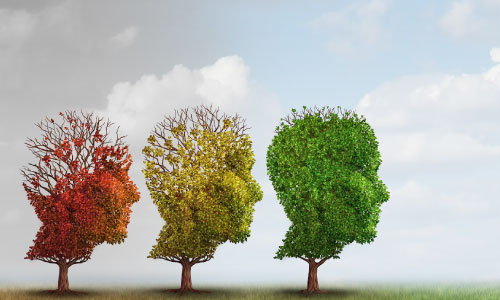Gray Matters!
Brain Science 101
The three primary regions of the brain are pivotal in how we learn, feel and behave. The Prefrontal Cortex, the Hippocampus, and the Amygdala.
The prefrontal cortex is located in front area of the brain, behind the forehead. It is the part of our brain that controls our mental processes, often referred to as the “thinking” part of the brain. This is where our executive functions are. The prefrontal cortext is the last part of the brain to develop. Our ability to plan, make decisions and regulate our behavior is limited until our brain fully develops, around 25 years of age.
The hippocampus is in the middle of the brain. It plays a necessary role in our ability to form, organize and store memories. It is responsible for processing of long term memory and the memory of the location of objects or people. It is also the area of the brain that responses to emotions.
The Amygdala is in the back of the brain. This little guy plays a crucial role in controling our emotional responses and helps store memories. When the amygdala is deregulated, the prefrontal cortex is not able to function. Thinking and learning is not an option.


Cognition Connection

Cognitive skills are the brain-based skills we need to carry out any task from the simplest to the most complex. They have more to do with the mechanisms of how we learn, remember, problem-solve, and pay attention, rather than with any actual knowledge.
Cognitive skills development involves the progressive building of learning skills. Attention, memory, and thinking are crucial skills that enable individuals to process sensory information and learn to evaluate, analyze, remember, make comparisons and understand cause and effect.
The brain uses cognitive skills to think, learn, read, remember, pay attention, and solve problems. Cognition is the action of learning.
The brain uses the process of executive functioning to plan, focus attention, remember instructions, and juggle multiple tasks successfully.




Neuroplasticity
The awesomeness of the ever-evolving brain.
The human brain is composed of billions neurons. Early researchers believed that neurons stopped being created shortly after birth. Now we know that the brain possesses the remarkable capacity to reorganize pathways, create new connections, and, in some cases, even create new neurons—a concept called neuroplasticity or brain plasticity. Our brains have the capacity to change, adapt and develop throughout life. Neuroplasticity creates the ability to learn new things; enhance existing cognitive capabilities; recover from strokes and traumatic brain injuries; strength areas of the brain when some functions are lost or decline.
Two types of neuroplasticity:
Functional plasticity: the brain’s ability to move functions from a damaged area of the brain to other undamaged areas.
Structural plasticity: the brain’s ability to actually change its physical structure as a result of learning.
Ability of nerve cells to change or adjust.
Neuro: Neurons, the nerve cells that are the building blocks of the brain and nervous system.
Neurons, the nerve cells that are the building blocks of the brain and nervous system.

SAJE Series
Select a series below and learn how SAJE can help.
Ready to learn more?
Curious to know more?
Please complete this form and we will be in touch with you within 48 hours, except on weekends and holidays.
"*" indicates required fields




